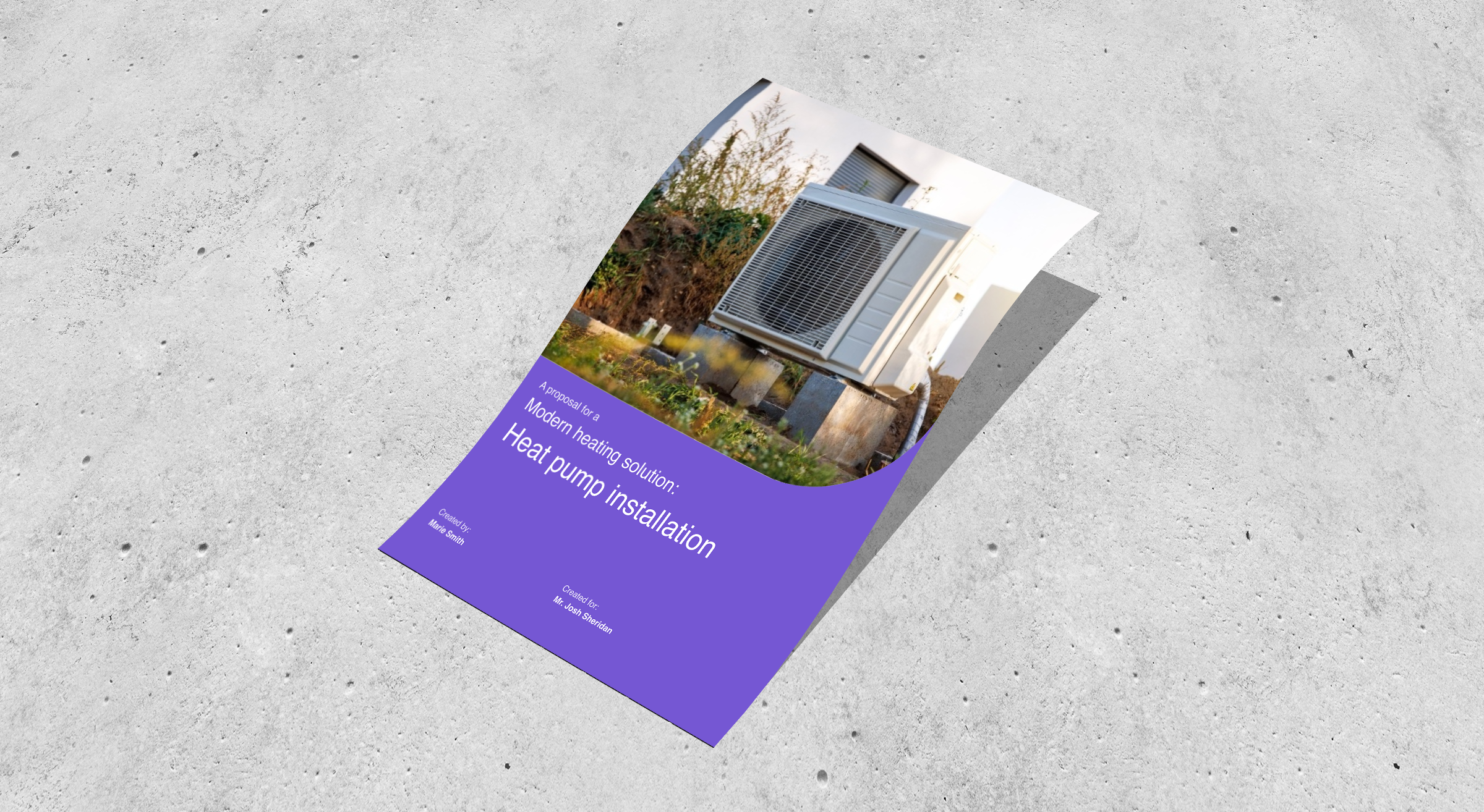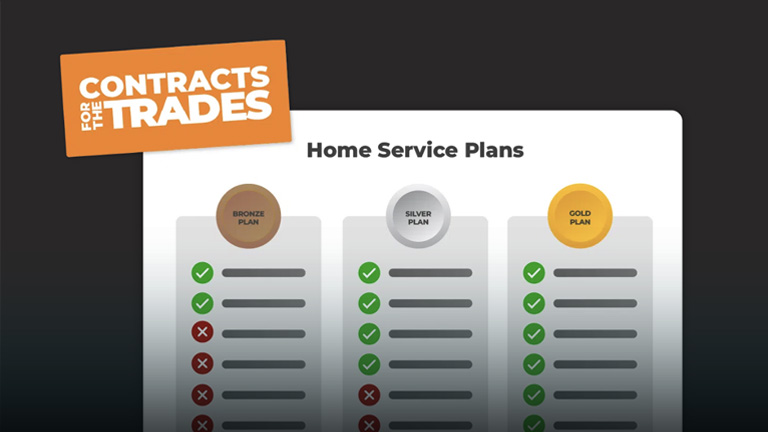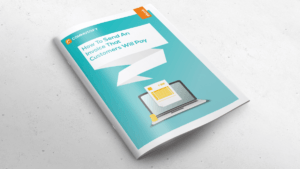How Your Business Can Handle Non-Paying Customers
November 30, 2022 | Read: 13 minutes

Whether it’s an individual or a business who’s refusing to pay an invoice, it can be a challenge to deal with non-paying customers.
So, what can you do when a customer won’t pay up?
There are a lot of options available, especially if a customer is refusing to pay for work you’ve already done.
We’ll cover preventative and reactive measures so you can handle non-paying customers with ease!

Why Would a Customer Refuse to Pay You?
There are lots of reasons why a customer might refuse to pay, or simply be slow in handing over their cash. It could be that:
- they don’t have the funds available,
- they may have gone out of business,
- the customer wasn’t satisfied with your service,
- they’re trying to get out of paying for the service.
Whatever their reasons, dragging out the payment process will be frustrating and costly. And at the end of the day, without a good payment processes in place, you’re at the mercy of the customer:
It doesn’t matter how early or prompt you are, how clean or courteous you are, or how high-quality your service and workmanship are… the customer always has the financial upper hand.
Elliott Raggio, Director of Plumbing On Tap
Fortunately, there’re preventative steps you can follow to help avoid non-paying customers in the first place.
There’re also actions you can take to actively manage non-paying customers when issues arise, too.
Let’s explore both, below:
How to Avoid Non-Paying Customers:
Here are eight preventative measures that will help you to avoid non-paying customers:
1. Don’t push the sale.
When it comes to selling, if you don’t ask, you won’t get. However, no customer wants to be pushed to say “yes” to a job, either.
If your team have to push to make a sale, that’s not a positive experience for your customer. This can easily lead to resentment and buyer’s remorse. They may even want their money back.
In the worst-case scenario, the customer could back out of a job and refuse to pay. In more extreme circumstances, they may even cancel a job that’s already begun. It all comes down to your professionalism and the journey you take your customers on.
Consulting with them properly ahead of time and setting expectations will be a big help to getting customer to pay for your services and do so on time.
2. Watch out for penny-pinchers.
If a customer seems more concerned with the price of your plumbing services than the services themselves, be wary. Everyone wants a good deal, but a race to the bottom is rarely worth the effort. After all the effort it takes to figure out how much you should charge for your services, you don’t want to go and make a loss.
If you can agree on a price for your service and understand where you can afford some leeway, you’re more likely to avoid difficult conversations about pay. This will reduce the number of non-paying customers you’ll deal with, too.
Agreeing a price ahead of time is also help by point 3:
3. Insist on a contract.
It definitely helps to have a service contract because if a customer takes forever to pay, and there’s no contract, it suddenly becomes a lot harder to chase the payment.
Contracts outline the scope of work, payment terms, and consequences of non-payment.
You’ll find it always worth producing a detailed contract with clear terms & conditions for your customers.
If there’s no paper-trail it’s far easier for a customer to dispute the price of a job. A simple quote and and signed authorisation can go a long way if a dispute does arise, later.
This way, pricing is transparent and a signed contract makes it harder for a customer to refuse to pay for work later.
If it sounds like a pain to manage, that’s where software can be a big help:
Implementing dedicated software for contract management, scheduling, and billing reduces manual errors and enhances overall efficiency. Embracing digital tools not only aids in compliance but also provides a more seamless experience for both businesses and clients.
Chris Townsend, Three Movers
For more information about contract management, explore our blog, or take a look at how to write a quote for a job: it’s simple but effective!
4. Collect evidence before chasing non-paying customers.
It’s easier than ever to collect and record useful data these days. If you’re using software to help manage your business, then taking photos, sharing files, and even helping customers sign digital contracts is quick and easy.
There’s really no excuse not to use software to help you:
We do all we can to avoid being put into this position [of not getting paid] by taking regular photos and getting on-site signatures in our Commusoft app.
Elliot Raggio
Using a custom form to collect signatures is easy and can give your team the best chance of avoiding non-paying customers thanks to simple, effective record management.
5. Get paid upfront.
Getting paid upfront is the most effective way to get paid on time.
It could be that you ask for a deposit as a percentage of the overall job, or perhaps run a credit check so you can be the confident customers can pay.
Depending on the type of work being done, you might ask for payment to be made in stages.
For example: one-third paid as a deposit, another third halfway through the job’s timeframe, and the final third once the job is completed.
Importantly, you shouldn’t start work until you’ve collected that first payment.
You should also ensure that customers are clear on payment terms.
(Again, a contract is useful here).
6. Beware the common red flags of non-paying customers.
A good rule of thumb is to treat every customer equally and look out for red flags that may indicate problems.
No matter who they are, you can do your due diligence ahead of time to ensure customers are capable of paying you. It’s always worth the effort to do some research.
After all, the bigger the job, the more it can hurt if the customer refuses to pay later.
To start gathering intel on a potential customer, check out Companies House, which can let you examine businesses’ returns. Red flags to watch for could include when a customer is:
- Selling their company.
- Laying off workers
- Not communicating with you
- Making excuses when you do talk to them
- A client of theirs has filed for insolvency.
Do your due diligence before starting work. If you spot any red flags before, proceed with caution.
In the unfortunate event that a client doesn’t make a payment, my advice is to not jump to any conclusions as to why this has come about, and to follow a strategic approach in handling the situation.
Paul Carlson, Managing Partner at Law Firm Velocity
If you set your processes up right, be sure to stick to them: it will protect your business from unexpected surprises.
7. Be picky with your invoices.
Incomplete or incorrect invoices will delay payments.
At worst, less-honest customers will use a typo or a missing VAT number as an excuse to stall your payment. This means you need to make sure your invoices are always filled in correctly and accurately.
It’s important to document all communications and agreements meticulously, as this can be invaluable in resolving disputes amicably or legally.
Jason Mueller, Marketing Manager, A-1 Auto Transport
To avoid late paying customers it’s suggested that you include the following on all invoices:
- The correct name and address for the customer.
- A description of the work agreed to and completed.
- The purchase order number.
- VAT details like the tax date and VAT registration number (if you’re VAT registered).
- Terms and conditions.
- The due date. Figure out when you need to get paid—and reduce that number by 14 days on your invoice (and contract terms).
- Your contact information so the customer can call if they have questions.
Also, keep in mind that payment is time sensitive. You can have the most organised invoicing system on the planet, but if you delay, you’re not going to get paid on time.
8. Get organised to avoid non-paying customers.
From the first confirmation, right through to completion, clear messaging helps to set expectations and reinforces deadlines. If you keep your customers informed, you’re far more likely to get paid on time!
On the other hand, sloppy accounting practices will cause your plumbing business to lose lots of cash. If you organise yourselves, you’ll speed things up for customers, too.
This means creating:
- A payment workflow.
- An estimate template.
- A contract template.
- An invoice template.
- A friendly reminder template to send before the payment is due.
- Demand letters for when requests require urgency.
Utilizing payment reminder systems and offering payment plans can encourage timely payments while preserving customer goodwill.
Daisy Liang, Sales Manager, KOYO Machinery
Customers who refuse to pay can be a major stress, but if you prepare for the worst-case scenario by creating all the tools above, you can make the process of getting paid swift and painless.
Listen to Transforming Payments with Instant Bank Pay on the TakeStock Podcast!
Here’s What to do When a Customer Doesn’t Pay:
You’ve seen the preventative steps that can help you to avoid late payments. While they’re going to be useful, it doesn’t mean you’ll never have late payments to deal with ever again.
For when you do have to chase a customer, here’s what you can do when an invoice is not paid on time. From legal action to debt collecting, there’re more than a few options available to you:
1. Get in touch with the customer directly.
Let’s say a customer’s payment is two days late. It soon becomes five days, then a week. Waiting clearly isn’t going to solve the problem.
Instead of waiting, you need to be proactive and contact them. Reach out in as many ways as you can. Start with an email (ideally with an instant bank transfer), or a phone call, but if the delay continues, contact them via text, post, and repeated emails that stress the urgency of the situation.
It’s important to have a conversation. Keep the call friendly, but be sure to record all the details in case you need to follow up later
It could be that the customer forgot, or perhaps they need assistance paying you in another way. Either way, a gentle reminder is often all that’s needed. And, as a first measure, it will help you recoup the amount you’re owed and mean you don’t have to escalate things even further.
In conversation with them, you could also talk about how financing or making a payment plan could help. Of course, if delays are ongoing, you’ll need to be more frank… which takes us to option 2:
2. If work is still ongoing, hold the job hostage.
This is a simple but effective solution if a customer is refusing or forgetting to pay you.
Holding a job hostage will likely get you paid faster because it puts pressure on the customer. After all, they won’t want to have a half-finished job on their hands.
While this can be considered an aggressive tactic, we would recommend that you raise the issue with your customer first before you simply stop work altogether.
If the issue persists, you may be within your rights to stop until you have your money.
In more extreme cases, it can be wiser to cut your losses altogether, though we’ll touch on that below. After all, if the customer refuses to pay you, you won’t want to keep digging yourself into a financial hole.
3. Write a demand letter.
PAYMENT DUE!
A scary letterhead can inspire a customer to cough up the cash. However, there’s more to these letters than bold red writing.
In your letter, be sure to include:
- The name and address of both your business and the non-paying customer.
- How much is owed. A clear statement of the debt, so there’s no confusion.
- The full details of the situation: Work completed, contracts signed, payments already made, any attempts you’ve made to collect already, etc.
- The legal basis for your claim—in other words, why does the customer legally owe you the outstanding amount?
- What steps you’ll take next if they don’t pay i.e. mention of a debt collection agency and debt recovery could be valid.
- Dated copies of all of the paperwork involved.
Use a mailing option where the customer has to sign when they receive the letter, so you can be sure they got it.
4. Don’t name and shame the customer.
When a customer refuses to pay, it’s tempting to post the details on social media so you can name and shame. It might momentarily feel good, but in the long term, that gut reaction can be costly.
Here’s why:
- It could be illegal. “The Credit Protection Association does not recommend the public naming and shaming of late payers.,” according to an article on the CPA.co.uk website.
- You could be sued by the customer for defamation.
- Prospects might be wary of working with a plumbing business that uses shaming tactics to get paid.
Instead of venting on Facebook when a customer refuses to pay, use the tips we’ve suggested—and if it comes down to it, take the step below.
Keep interactions between your business and the customer. If things escalate, the only third party you should involved is a debt collector (see below).
5. Take legal action and call in the collectors.
If non-payment of an invoice persists, it’s clear that the customer has zero intention of paying up.

If the outstanding amount is significant, it can be worth it to call a debt collector.
You could have a debt collector under contract to handle all your payment needs, but you can also hire them to chase after individual late payments, too.
It may sound extreme, but if you have signed agreements and have completed your side of the deal, you’re within your rights to get paid.
6. Let the lost payment go.
Of course, not everything is worth chasing. The worst-case scenario is that despite all your efforts, nothing has changed. You could escalate things further (like above) but you need to stop and think…
Work out if it’s worth the time, money, and hassle to go the legal route to collect the debt.
If you’re owed a huge sum, it might be, but it’s not cheap to chase payments through the courts.
You also have to wonder if it’s worth the time and energy, as that’s effort you could put into working with good customers, elsewhere.
It’ll be rare you’ll need to do this, but sometimes, it’s best to cut your losses.
Learn more, earn more.
Preventative action can play a huge role in helping you handle non-paying customers.
Ultimately, it comes down to making your customer journeys as frictionless as possible and using tools that make life easier for everyone.
Discover Commusoft: you’ll find our payment, invoicing, and job-tracking solutions will work wonders, allowing you to start transforming your customer journeys, today!









